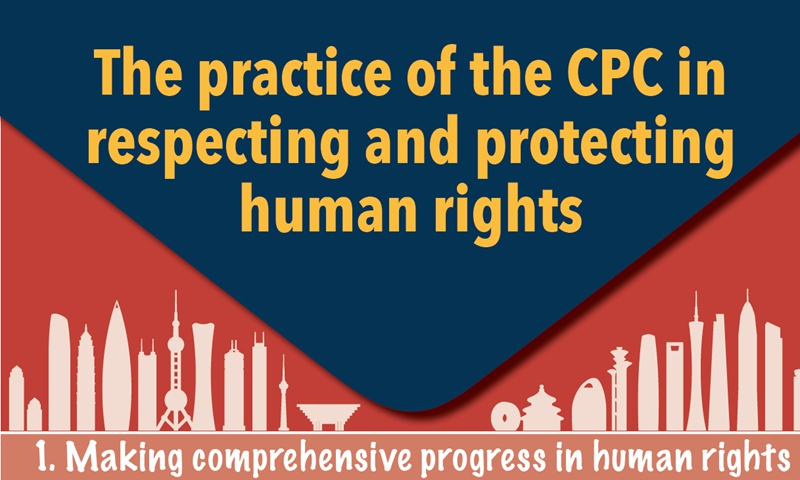World main countries 2021 Q1 GDP Growth Infographic: Wu Tiantong/GT
Xi Jinping: Chinese people will never allow foreign bullying, oppressing or subjugating
https://youtu.be/oS5QqS9C_xw
https://youtu.be/J1s1evS3xJc
As China gears up to celebrate the 100th anniversary of the founding of the Communist Party of China (CPC) on July 1, one of the greatest achievements of the CPC to be highlighted is what has been widely described as an economic miracle. From a backward agrarian economy in the early days of the People's Republic of China (PRC) to an economic and technological powerhouse today, China's economic success story under the CPC's leadership has arguably become the global story of the century and the envy of the world.
The secret codes behind such miraculous achievements have also become a hotly debated topic around the world. This article will decode those codes.
Born into a poor rural family with per capita disposal income of less than 50 yuan ($7.80), the PRC, now in its 70s, has seen the income reading top 32,000 yuan as of 2020. Behind the 640-plus fold surge is the country's rapid ascent to a global behemoth in almost every aspect in an unparalleled timeframe and path.
What are the CPC's secret codes to economic success?
To answer that, the Global Times conducted an extensive examination of the CPC's economic policymaking at several critical junctions and interviewed domestic and foreign experts. Four key themes stand out.
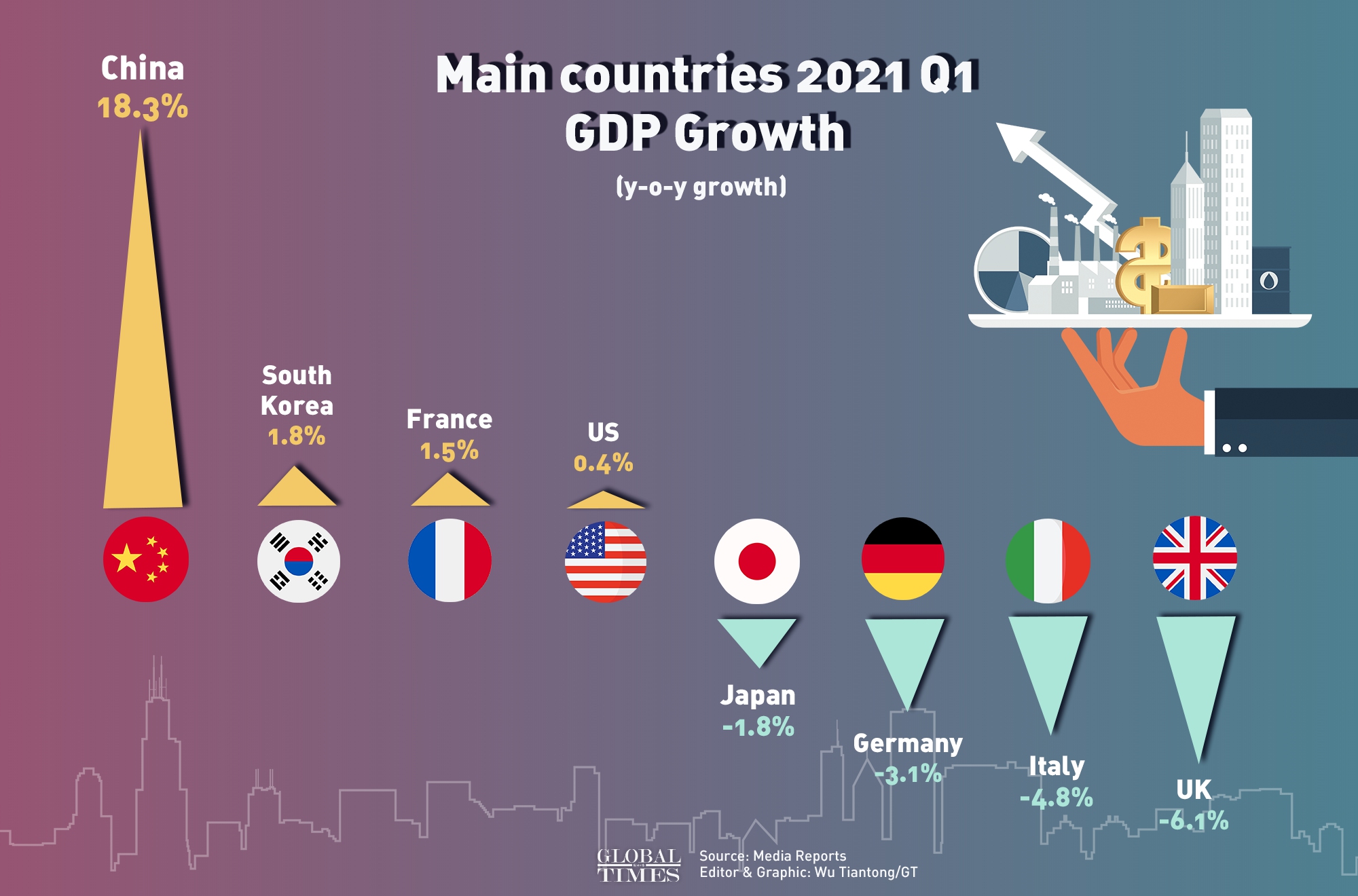
World main countries 2021 Q1 GDP Growth Infographic: Wu Tiantong/GT
Bold planning, effective execution
"The five-year planning is the major driving factor that boosted the Chinese economy to the No. 2 in the world. This system is effective and reliable in focusing on and predicting how the economy performs and which necessary adjustments are required to finetune it along the way," David Monyae, director of the Centre for Africa-China Studies at the University of Johannesburg, told the Global Times.
Since its beginning in the 1950s, there have been 14 five-year plans (FYP) - each marks a significant shift in China's economic policies and advances in social and economic development.
The first FYP, which started in 1953, envisioned the industrialization of China, starting the 60-plus year journey of creating an economic constellation that's being renovated every five years.
"China has led a different path than the West's laissez-faire capitalism or its so-called marketization. China maintains more compelling institutional prowess than the West," said Cong Yi, dean of School of Marxism under Tianjin University of Finance and Economics, citing the Party's strong ability to make strategic development plans that integrate short-term plans into medium and long-term ones.
After initially drawing on the Soviet Union's five-year planning experience, the CPC soon realized the limitations of the Soviet model and some of its shortcomings and mistakes, and then decided to independently explore a socialist construction road suited to China's national conditions, which, coupled with laser focus and effective execution, led to one milestone after another.
The 13th CPC National Congress in 1987 made a proposition of a three-step development strategy that envisaged doubling the gross national product (GNP) between 1981 and 1990, doubling its GNP again by the end of the 20th century and per capita GNP reaching moderately developed country levels by the middle of this century.
Buoyed by unprecedented reformist drives since the country's grand reform and opening-up in 1978, the second-step target was hit at the conclusion of the Eighth FYP (1991-95), five years ahead of schedule.
In yet another milestone, the Third Plenary Session of the 14th CPC Central Committee in November 1993 passed the decision on certain issues in establishing a socialist market economic system. With the guidance of the Ninth FYP (1996-2000), the country made good the transition from a planned economy to a socialist market economy in 2000, a prelude to its accession to the WTO in December 2001.
In the latest proof of the effectiveness of the FYP, just as planned, the alternation of the 13th FYP ended 2020 and the newest FYP starting this year is on course to deliver a victory for its first centenary goal of building a moderately well-off society on the CPC's 100th anniversary.
"The main feature of the five-year plans is the top-level design, which is holistic, macroscopic, forward looking, anticipatory and binding," Zhao Xuejun, director of the Modern Economic History of China Research Center under Chinese Academy of Social Sciences (CASS) Institute of Economics, told the Global Times.
Today, China's FYPs have become a closely watched policy document around the world as it provides a valuable window into China's economic policies and development goals.
This year, global attention was focused on the 14th FYP ending 2025, which is set to pave the way for the second centenary goal to be attained - building a modern socialist power by 2049 when the PRC turns 100.
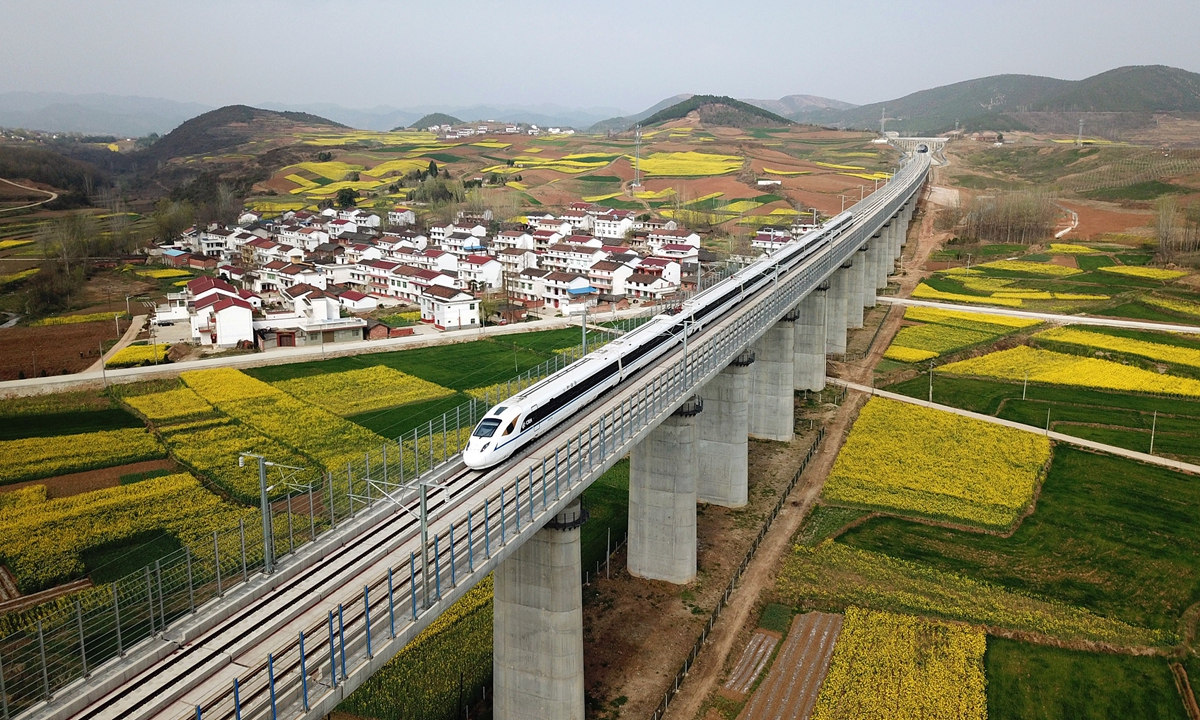
File photo:VCG
Seeking truth from facts
However, even as China's economy advanced in an overall steady pace as planned, there were no shortages of difficulties and mistakes over the past several decades - from some early decisions and policies that were against market rules to the "decade of the catastrophe," to the blind pursuit of extensive and high-speed growth over a certain period of time.
In overcoming those challenges and mistakes, the CPC showed its ability to "seek truth from facts" - a phrase that epitomizes the Party's flexibility and ability to objectively pinpoint the problems, experts said.
That ability was highlighted in the Party's response to crises during the Great Leap Forward era, which coincided with the Three Years of Natural Disasters (1959-61) and the breakdown of Sino-Soviet Union relations.
During the period, exaggeration about production prevailed across China, being called "launching satellites," and from wheat, rice and steel, places and reports started to boast of false high productions. The economic and social campaign that aimed for a rapid industrialization to steer the-then poor economy into a modern communist society appeared to have wrong-footed the economy.
Instead of turning a blind eye to the truth, the CPC Central Committee urged maximum efforts to correct all deviations in an urgent instruction letter in November 1960 and a Party plenum in January 1961 decided on the implementation of an economic adjustment.
As the economy ran its course of adjustment at the end of 1965 and began its third FYP, the Cultural Revolution began, putting the country in "10 years of catastrophe" until 1976.
Then came another turn - the 11th National Congress of the CPC in August 1977 declared the end of the Cultural Revolution and reiterated that the Party's fundamental task was to build the country into a socialist modern power.
"The CPC has a strong mechanism of self-correction; internally it came from the democratic system of the Party, and essentially it is built on the Party's tenet of seeking interest for the people and re-juvenation for the nation," Zhao told the Global Times.
The perseverance with seeking truth comes across as building the economy's resilience that has dissolved various challenges and crises, such as the 1997-98 Asian financial crisis, the 2008 global financial crisis and the COVID-19 pandemic, into hiccups which only result in increased economic sophistication, observers noted.
In response to the crises, the CPC was able to seek truth from facts and be flexible, as well as to be free from prejudice and ideological bias, encouraging local exploration and innovation, Zhao said.
In another striking and more recent example, the Party has managed to bid farewell to an unhealthy obsession with GDP growth that regards GDP statistics as the core or even the only indicator for assessing government performance, which stoked concerns over high GDP numbers at the expense of the environment and economic imbalance.
For instance, in August 2014, East China's Fujian Province cancelled the GDP assessment in 34 counties and cities, and implemented the evaluation method of giving priority to agriculture and ecological protection.
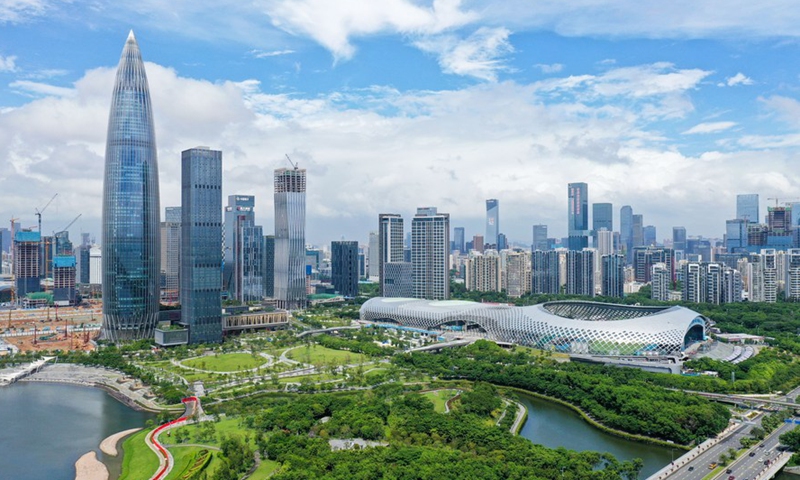
Aerial photo taken on Sept. 17, 2020 shows the Houhai area in Nanshan District of Shenzhen, south China's Guangdong Province. Photo:xinhua
Reform and opening-up
Just as the CPC is very swift in correcting mistakes, it is also profoundly persistent and steadfast in carrying out scientific policies - another pillar of the CPC's economic success.
The milestone Third Plenum of the 11th CPC Central Committee in December 1978 has been widely known as a starting point for the economy's 40-plus years of reform and opening-up, ushering in a transition from a class struggle-themed Party platform to a focus on economic building.
The main resistance force came from people's fear of capitalism, thinking that opening to the outside world would alchemize New China. With keen observation on the world's development in economy and science and technology, Deng Xiaoping launched the opening-up policy, pushing aside all hesitance and skepticism.
In early 1982, the Shekou industrial zone in Shenzhen was criticized by some for planning to hire a foreign business manager. When Deng learned this, he immediately applauded the decision, saying that it's OK to hire foreigners as managers and it is no traitorous behavior.
The reform of the country's state-owned enterprises (SOE) is an evocative story of the country's undaunted approach to boosting its economy.
By 1987, 80 percent of the country's state-owned enterprises (SOEs) adopted various forms of the contracted managerial responsibility system. Some enterprises even began to undertake shareholding system reforms.

Graphic:GT
In the first quarter of 1996, the country's 68,800 SOEs, as a whole, recorded their first net loss since the founding of the PRC.
After the pain comes the result. From 1989 to 2001, though the number of SOEs dropped to 46,800 from 102,300, their total industrial added value increased to 1.47 trillion yuan from 389.5 billion yuan, surging 11.67 percent annually.
Despite tremendous success over the past several decades, difficulties and hurdles never ceased to test China's commitment to the reform and opening-up policies today.
The thorn-covered yet high-yielding road to reform and opening-up, as such, was being paved as efforts to liberate thoughts and the bold push for innovation trickled in. With an endeavor to sustain liberation on multiple fronts for there to be even deeper reforms, China finally pushed through.
In 2020, China overtook the US to become the world's top destination for new foreign direct in-vestment. In the first five months of 2021 alone, China attracted 18,497 new foreign-funded firms and 481 billion yuan in foreign capital.
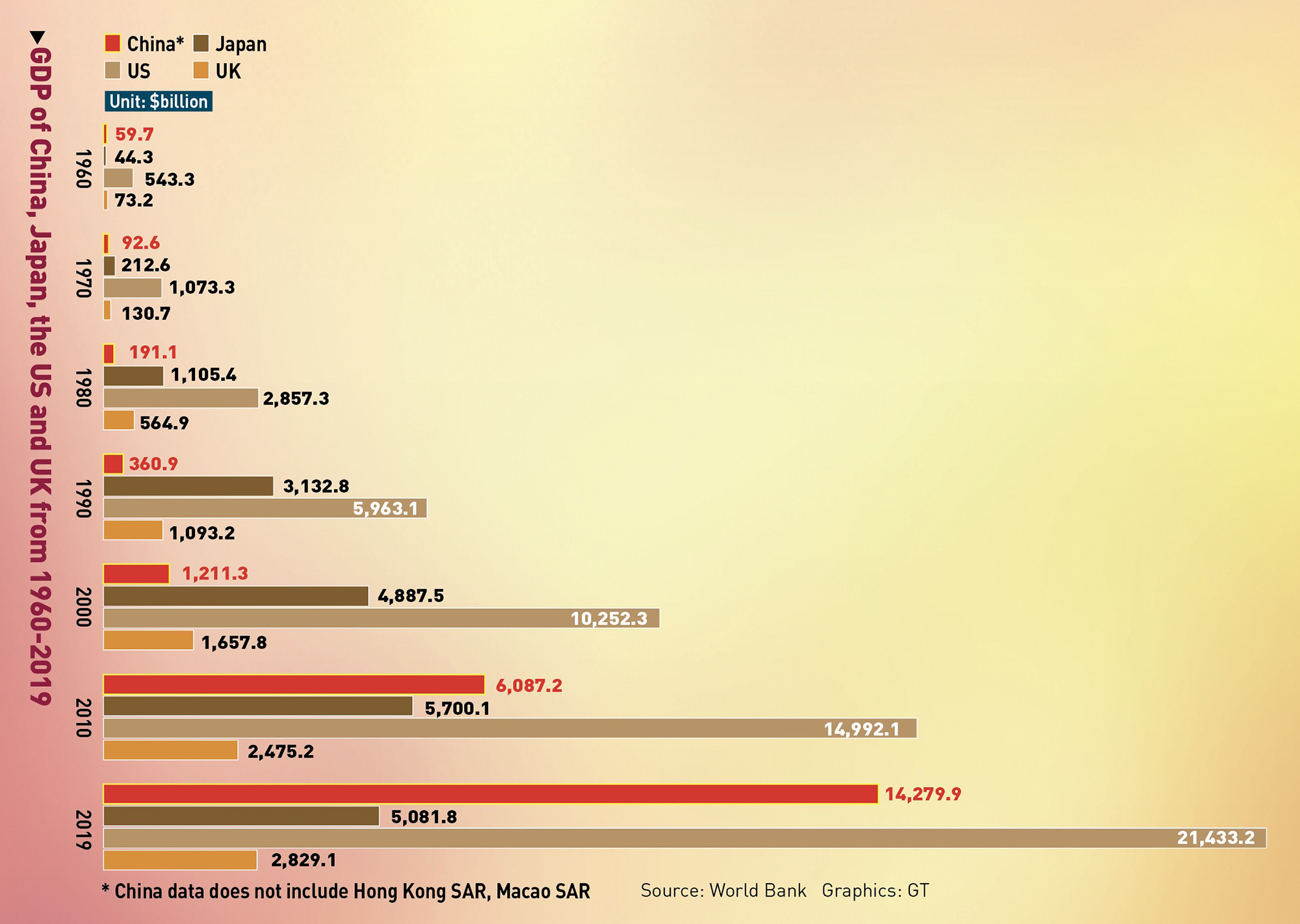
Graphic:GT
Self-sufficiency, innovation-driven
However, increasingly opening up to the outside world does not mean China will not mitigate seri-ous risks for its national and economic security. Since the earlier days of the CPC's leadership, self-sufficiency in many core sectors such as food and technology was a major focus, which has also become a key code to the CPC's success.
In an early sign of a self-reliant approach to development, by 1964, the self-sufficiency rate of China's main machinery and equipment had reached over 90 percent. With construction of the Daqing oilfield completed and Shengli and Dagang oilfields under development, China achieved total self-sufficiency in oil by 1965.
Since then, that quest for self-sufficiency in many areas, including technological innovation, has never stopped and has helped lift China to a world-leading global technological power in many areas - from 5G to high-speed rails, and from new-energy vehicles to space exploration technologies.
Just last week, China pulled off the country's first-ever automated fast rendezvous and docking of a manned spacecraft with China's orbiting space station core cabin, after the Shenzhou-12 manned spacecraft was successfully launched on the Long March-2F Y12 carrier rocket.
China's considerable technological prowess has already unnerved the US, which has been a domi-nant player for decades.
The CPC's focus on self-sufficiency and innovation-driven strategy was particularly notable in the country's efforts to mitigate an increasingly hostile external environment marked by a relentless attempt by the US to contain China's rise.
Even before the US' crackdown campaign, the focus on self-dependence and technological innova-tion was highlighted as the CPC convened its 19th National Congress in October 2017, where a new era of China's socialism was declared. The Party's 18th National Congress also introduced an innovation-driven development strategy.
Since then, in a series of meetings and top policy documents, the CPC has constantly stepped up efforts to pursue efficiency in a wide range of areas, from semiconductors to crop seeds.
"Against the backdrop of an intensifying China-US rivalry, China may face rising risks of high-tech blocks, supply chain obstruction, or further trade disputes. What China needs to do is focus on its own business and concentrate on overcoming the difficulties in key technologies, equipment, raw materials and design software that are being held back by Western countries, and coordinate devel-opment and security," said Zhao.
As these new challenges emerge, while China is no longer the backward, war-torn country it was 7 decades ago, challenges and risks, both domestic and foreign, remain. With the CPC's firm leader-ship and its proven successful economic policymaking, China is better positioned than ever to reach its bold development goal of becoming a modern socialist power in the coming decades, analysts said.
China's Success Cannot Be Copied and Pasted,
defeated Delta variant !





